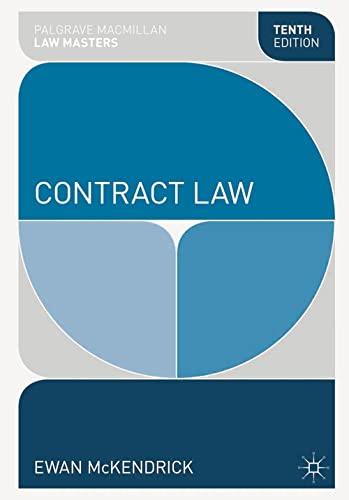Question
1. Imagine a woman who suffers from dementia and lives in an assisted living facility. One day, she wanders into another resident's room and picks
1. Imagine a woman who suffers from dementia and lives in an assisted living facility. One day, she wanders into another resident's room and picks up an antique vase from the other resident's bureau. As she holds the vase, she forgets that it belongs to someone else and walks out of the room with it. Later, she places it on her own nightstand, where she admires it greatly. Has there been a crime here? Why or why not?
2. Consider the case of O. J. Simpson, in which a criminal jury acquitted him of murder, but a civil court found him liable for wrongful death. Both trials arose out of the same incident. Do you think that the burden of proof should be the same for a civil case as it is for a criminal case? Why?
3. What should be the goal of penalties or punishments for criminal offenses? Compare and contrast how our criminal justice system would differ if the goal of punishment was each of the following: retribution, rehabilitation, protection of society, or deterrence from future acts of crime.
4. Consider the difference between minimum security federal prison camps and medium or high-level securities facilities, described here: http://www.bop.gov/locations/institutions/index.jsp . Should whitecollar criminals receive the same punishment as those convicted of committing a violent crime? Why or why not?
5. Before listening to the link in this assignment, write down your perceptions of "federal prison camp." Then, listen to an interview with a convicted white-collar criminal here: http://discover.npr.org/features/ feature.jhtml?wfId=1149174 . Compare your initial perceptions with what you have learned from this interview. How are they the same? How do they differ?
6. How should a corporation be punished for committing a crime? Find an example of a corporation that was convicted of a crime. Do you believe that the punishment was appropriate? Discuss.
7. What kinds of crimes do college students commit? While the vast majority of college students wouldn't even think of committing a violent crime, many students do engage in crimes they believe to be victimless, such as downloading movies or buying and selling prescription drugs like Adderall or Ritalin. Are these crimes actually victimless?
8. The exclusionary rule was created by the Supreme Court as a means of punishing the police for violating a defendant's constitutional rights. Some legal commentators, including several members of the Supreme Court, believe the exclusionary rule should be abolished. Without it, how do you think society can ensure the police will not violate a citizen's constitutional rights?
Step by Step Solution
There are 3 Steps involved in it
Step: 1

Get Instant Access to Expert-Tailored Solutions
See step-by-step solutions with expert insights and AI powered tools for academic success
Step: 2

Step: 3

Ace Your Homework with AI
Get the answers you need in no time with our AI-driven, step-by-step assistance
Get Started


